Mysterious Cities Of Gold (6 Discs) (DVD)
Introduction
You may not know this, but I am something of an anime fan. There's something about the storytelling, variety and depth of Japanese animation that has me hooked, and it's something that's made patently obvious given the direction in which my reviews have focussed in recent years. I wasn't always this way, and contrary to some opinions, anime isn't a gene that results in a mutated segment of society. It's a taste that I have acquired over the years, much the same as any other entertainment medium. But I was indoctrinated without even knowing it. Like most children of the eighties, I grew up with shows like Tom and Jerry, the Hanna Barbera cartoons, Looney Tunes and the like, cartoons that were formulaic or just plain zany. It never occurred to me that serial animation could be used to tell a story over several weeks. Then all of a sudden, there was an influx of these shows, stories like Ulysses 31, Around The World With Willy Fogg, and Dogtanian and the Three Muskehounds. At that tender age, I didn't care where they were from, all that mattered to me was that I understood them, that they told imaginative and varied stories, and that the characters developed from one week to the next. It was only until much later when I found my first experiences with anime to be surprisingly familiar, that I realised that those early animations were Japanese European co productions, and that the meme had been surreptitiously planted without my even realising.
The best of those early cartoons, and the one that people remember with most fondness and nostalgia, was 1982's The Mysterious Cities of Gold, which came to British television courtesy of the BBC's Broom Cupboard via Phillip Schofield and Gordon the Gopher back in 1986. I was at that age when I was endlessly fascinated with mysteries and the paranormal, and the idea of lost ancient technologically advanced civilisations in South America, complete with hidden golden treasures just rang all the right bells. It was also a moment of serendipity for me, as at school we had just started studying the Conquistadors and the discovery of the New World. So all those names I learnt about in history class would be at home, waiting for me, in an animated adventure. Twenty-two years later, the classic French-Japanese co production comes to DVD at last. I've been looking forward to this with unhealthy anticipation.
It's the year 1532 and Esteban is an orphan living as a ward of the church in Barcelona. He's known in town as the Child of the Sun, owing to his apparent ability to make the sun shine at will. The only link to his past is a crescent medallion with a circular piece missing from it. The day that his patron, Father Rodriguez dies is the day that navigator Mendoza comes into his life, and tells him the circumstances of his discovery. Mendoza rescued him as a baby from a storm battered ship in the Pacific, when his father handed him to Mendoza to keep him safe. Then that ship vanished into the storm. Now Mendoza is part of a voyage back to South America in search of treasure, the legendary Cities of Gold, and given Esteban's unusual heritage, Mendoza invites him along. Zia is the daughter of an Inca priest, who was taken from her family and brought to Spain where she serves as a courtier to the Queen. But her abilities are much in demand by Governor Pizarro, who wants the Cities of Gold to sate his own greed. General Gomez is travelling to South America, and he orders Mendoza to abduct Zia and bring her along on the voyage. Early on in their voyage, they encounter the sole survivor of the Hivan Empire, a boy named Tao, and together the children follow their destinies.
Their voyage takes them from Barcelona, thousands of miles south and around the treacherous Straits of Magellan up the western coast to Peru. The children are soon separated from the ship, and journey on alone with Mendoza and his cowardly companions Sancho and Pedro. Their adventures take them to the lands of the Incas, the Urubu, the Mayans, the Amazon warriors, and the Olmecs. Along the way they explore fantastic ruins, and discover amazing ancient technology, such as a massive solar powered ship and a giant golden condor. While Mendoza is motivated by avarice, Zia seeks the father that she was torn from all those years ago, Tao seeks his Hivan heritage, and Esteban searches for his own past, and the father that gave him up and vanished into the oceans. On the way they encounter duplicitous villains like Gomez and his overbearing lieutenant Gaspard, Governor Pizarro himself and his Spanish armies, the cruel Dr L'Aguerra and the traitorous Marinche and the evil Olmec leader Menator. Their adventures will take them to the gates of the Mysterious Cities of Gold.
Fabulous Films presents all 39 episodes on DVD for the first time in the UK, painstakingly restored, and spread across 6 discs, along with a wonderful booty of extra features. While the discs go on general release at the end of June, it is available now exclusively from HMV, and has been since Easter.
Picture
The Mysterious Cities of Gold gets a pretty spiffy 4:3 transfer given that the show is now reaching its quarter century mark. The main obvious sign of the digital transfer is some slight aliasing, which only really becomes evident when you use the pause button. In normal playback it shouldn't be an issue. But it is a 26-year-old animation, and while the image is relatively free of dirt and scratches, it does show signs of age, with a rather prominent cigarette burn in episode 4, and videotape skew in episode 9. Colour consistency is occasionally an issue, with episode 12 noticeably darker, and the final episode wavering a little. The obvious issue is the judder that accompanies each scene change, which I guess is a by-product of the analogue dubbing process. It's obvious in the first three episodes but soon becomes imperceptible after that. The most obvious problems crop up in episode 33, with a prominent green, then red tint to subsequent frames 7 minutes in, then a couple of seconds of compressed aspect ratio a minute after, with a thick black bar at the bottom of the image.
The animation itself has stood up surprisingly well, although perhaps that has more to do with nostalgia rather than objectivity. The character designs work well, and are consistent through the series, and the world design is excellent. When the animators did splash out with their effects budget, to create the Solaris and the golden condor, the results were certainly memorable. But crowd scenes will have the incidental characters vanish into a simple uniformity. The characters have the traditional anime look to them, with the children all possessing large eyes and button noses, but there is certainly something Gallic in the scope and imagination of the show. The cooperative energy comes across well on the screen.
Sound
The sole audio track on the discs is the DD 2.0 English track, and unfortunately subtitles are lacking. The dialogue is clear throughout though, and that awesome music is there in all its glory. The Mysterious Cities Of Gold had a score that was nigh on cinematic, with the main characters having their own themes, and an epic orchestral feel to the action. Unfortunately it does suffer from the perennial problem of serial animation, that of the themes getting repetitive, but it's nowhere near as annoying as it could have been.
I had something of a double vision (hearing?) moment with the dub. Listening with modern sensibilities, trained through countless hours of anime, I instantly tagged it as unimpressive and cartoonish. Yet my nostalgic inner child was transported back to the mid-eighties when this was essential viewing, and I forgave all its flaws. Ultimately the charm of the show, and something that is still relevant today is that that the child characters are actually voiced by children. There's something spontaneous and natural to the dub that still appeals. The audio has aged as well as the video, and the only issue was a rare 'wobbly tape' moment. There's none of the degradation in quality and loss of definition that occurs with poorly maintained shows of yesteryear.
Extras
I received a set of discs with some of the goodies, but not the packaging. However, I have seen the set on sale in HMV, and the discs receive a nice sturdy boxset that hints at the treasures that lie within.
There are a set of six rather snazzy postcards, although they do have HMV exclusive printed on the back, so I don't know if they will be in the general release package (Incidentally, if you pre-order the set from Play, you'll get the soundtrack CD too). There was also a double-sided poster, with a promo image on one side and a map on the other. A 32-page booklet of episode synopses and character profiles goes into such detail as to almost make the discs redundant. I didn't receive, but there should also be a 12-page historical facts booklet.
Each disc gets some wonderfully designed CG animated menus, taking us on a tour of an ancient tomb to get to the various aspects of the discs. The menus transitions are fast, so that the menu design doesn't overpower the contents.
Something that we never saw in the UK broadcasts was the documentary after each episode. There would be a 3 or 4 minute long live action piece, which would have a narrator describing the real world equivalent of an aspect of the previous episode. Incidentally, some of the footage here has probably resulted in the PG rating. I'm thinking of a recreation of an ancient sacrifice, hunters at work nabbing an alligator, an actual chicken sacrifice, and a guy being mauled in a bullfight.
The rest of the extras are distributed across all six discs.
Disc 1
The series synopsis offers 3 pages of text, a brief blurb describing the series, and the text of the opening narration.
There are four deleted scenes here, 3 scenes from episode 1 running to a total of a minute in length, as well as a 2½-minute montage from episode 4. None of the scenes has any sound, so it's hard to place them in context. Although there does seem to be a discarded opening sequence here, with live action footage of a storm beset galleon.
There are two storyboard sequences here running to 3½ minutes in length. You can view these side-by-side with the finished animation.
There are around 100 pencil line art images to navigate through, production drawings taken from the first 5 episodes of the show.
Disc 2
The Interview with the Dubbing Cast lasts 30 minutes, and was filmed in 2007. A large contribution comes from dubbing director and voice of Mendoza (and Pedro), Howard Ryshpan. There are also contributions from Shiraz Adam (Esteban), Janice Chaikelson (Zia), and Adrian Knight (Tao), although it's a little disconcerting to see the people whose voices you heard as children now all grown up. It's a fascinating documentary, which looks at how the English version of the show came about, and why it was dubbed in Canada. It's interesting to see that they worked from the original French script, not the Japanese. It's also astounding to see how ADR was accomplished pre-digital, where cutting and pasting were actual physical activities. It explains why the scene changes often feel jumpy in the final animation. The film was literally cut apart and glued back together.
Dubbing Scene Recreation (2 minutes)
The description of the dubbing process does get a little esoteric in the previous documentary, so this little featurette takes the original cast back into the studio to redub a scene from an episode, to show how it was done.
There is a 2-minute storyboard sequence here for episode 13.
The English language actors were never listed on the end credits, which were simply the original French credit sequences, so there is a useful Dubbing Cast List. There are also voice actor biographies for the four cast members who took part in the documentary.
There are several pencil art images in an Original Character Drawings gallery.
Finally on Disc 2, there are Character Biographies for the cast. This is basically the character bios from the booklet reprinted on the disc.
Disc 3
There is a text interview with the show's creator, Mitsuru Kaneko, who originated the concept and the scripts. This comprises 8 pages of Q&A in text form.
The Realtime Storyboard Sequence offers 2 minutes of episode 19.
There are also 2 galleries on this disc, with an Episode Stills Gallery offering countless screen grabs, while an Opening Sequence Gallery looks at the memorable title sequence in a set of incomplete cel images.
Disc 4
The Story Of The Production lasts 37 minutes, and features Jean Chalopin (Writer & Producer), as he talks us through the story of the production from the beginning. It's interesting to hear that Mysterious Cities Of Gold was one of the first productions created specifically for the satellite age, as well as the difficulties in getting funding for a serial animation. Although there is a lot of information about the collaborative process with Mitsuru Kaneko and the Japanese production team, this is very much a French viewpoint, with additional input from the director Bernard Deyriès and Composer Shuki Levy. While the mention of differences between the European and Japanese versions is tantalising, what really gets the juices flowing are some heavy hints that Chalopin drops about a potential second series and feature film in development.
This disc also contains 21 pages of text biographies for the production crew, about 10 original sketches of machines and props, and a second gallery brimming with additional random images associated with the show.
Disc 5
You'll get more original production drawings offering several pages of line art, two pages of the original French Sales Brochure, and 8 pages of the original Japanese/English sales brochure, although for these last two galleries, the text is far too small to make out.
The most notable extra feature on this disc is the Deleted Scene to episode 32. It's a scene of Sancho and Pedro using a downed Olmec warrior as a fulcrum to a seesaw. This wasn't shown in the UK, and my guess is that the then equivalent of OFCOM considered it an imitable technique that should be kept out of the reach of impressionable young Rangers supporters. It's worth noting the VHS quality of this scene, as it contrasts strongly with the quality of the restored image.
Disc 6
There is a Realtime Storyboard Sequence, which lasts 2 minutes and accompanies a clip of episode 35.
There are many more of the Original Episode Drawings in a gallery to be accessed via your remote.
The Opening Theme Karaoke is the only place on these discs where you will find a subtitle track.
The Phillip Schofield Clip - From The Broom Cupboard offers the chance to experience the denizens of said furniture singing along with the end credits. I actually remember it from the original broadcast. How sad am I?
Finally, the DVD credits. Take a moment to read through these to pay tribute to the wonderful people who have put such effort into creating such an exemplary package.
The only thing missing, that in my opinion would make this set complete other than subtitles, would be snippets of the original language tracks. There are points in the interviews where they refer to the differences in the Japanese version, most notably the musical score, and a brief scene or two of that version would have been a useful illustration of their points. And while we're at it, a couple of extracts of the French version that was adapted into English would have been nice as well.
Conclusion
It is the sixteenth century. From all over Europe, great ships sail west to conquer the New World, the Americas. The men are eager to seek their fortune, to find new adventures in new lands. They long to cross uncharted seas and discover unknown countries; to find secret gold on a mountain trail high in the Andes. They dream of following the path of the setting sun that leads to El Dorado, and the Mysterious Cities of Gold.
These words were inspiring to me as a child; I'd race home from school and commandeer the television for my twenty-minute fix of animated historical fantasy. Much as the opening monologue of Star Trek has gone down in television history, ask my thirteen-year-old self about the words up above, and I would have given you a similar reaction. What I wasn't expecting was to feel the same way about the show now as I did back then. Yet watching these episodes the intervening decades vanished, and I found that I was being inspired for the same reasons, reacting to the characters in the same way, and was just as gripped by the plot as I was back then. The animation may look creaky now, the dub could be better, but in every fundamental way, the show is just as strong as it was back then, which is an absolutely astounding achievement.
It's not perfect though, and I also noticed that I had the same issues with the show as before. It takes an age to really get going, with the first few episodes devoted to the journey to South America. It does the best it can, setting up the characters and getting the story in motion, but five months of an ocean voyage, condensed into three or four episodes does get tedious. It's only when they encounter Tao, and learn of the ancient technology of the lost Hivan Empire does the story kick into gear. Similarly in the final third of the story, there are one too many episodes devoted to stumbling around the jungle without progressing the narrative, and once again I was rolling my eyes when Esteban started anthropomorphising the Golden Condor. And the episode previews always wind up giving away essential spoilers. Given all that, I'm amazed at how much my experience with the DVD matched just how I felt twenty odd years ago.
The Mysterious Cities of Gold is a proper adventure series. They used to make them for children once upon a time, before political correctness and an urge to protect the l'il 'uns left kids TV safe and sanitised. I watch the occasional 'toon still, to keep my hand in, and it makes me lament the current generation, who are often mesmerised by 3D CG animation with little or no story, but plenty of flashy visuals, while we had brilliant storytelling like this. Then a nagging voice reminds me of dross like He-man and Bravestarr, and also reminds me how much I enjoyed Oban Star Racers (another French Japanese co production) this past winter. Things aren't actually that different, you just have to be discriminating in what you watch.
What I didn't care about back then, but what I realise now is that The Mysterious Cities of Gold was one of the rare times that edutainment actually worked. Normally, attempts to combine informative television with entertainment usually end up patronising and ineffective, but the Mysterious Cities of Gold, with its adventure storyline, and sci-fi fantasy angle, set against the backdrop of the Spanish Conquest of South America actually worked. It's made even more obvious on these discs with the inclusion of the documentary featurettes, something the original Japanese broadcasters required to fulfil their public service remit. These four-minute vignettes into South American geography, sociology and history offer great little tastes of peoples as they lived twenty odd years ago, and probably do so today too. What's notable is that they take the National Geographic approach to documentaries, with an informative voice over, playing against true life footage as is, without being sanitised or massaged for youthful consumption. I'm sure that's why the BBC omitted them, seeing the interred skeleton of Pizarro would put most people off their tea.
But the actual story is equally honest with its subject matter. It's the common approach of setting small, personal stories against a larger historical backdrop, so Esteban and Zia's search for their fathers, Tao's search for his legacy, and Mendoza's search for riches takes place in the foreground, while the destruction of whole civilisations plays out in the background, except for those points in the story where the clash between the New and Old Worlds is central to the plot. Pizarro is a brutal conqueror who's motivated solely by greed, and has enslaved the local Inca population. Neither the good guys or bad guys are immortal in the show, the battle sequences take a heavy toll, in fact even the initial ocean voyage isn't without its casualties, and the children's lives are constantly in danger, with some or all of them being offered up as sacrifices on more than one occasion. This is animated brutality that probably wouldn't get past OFCOM today. Yet that is what makes the show so edge of the seat thrilling.
It's also a good deal of fun, mixing comedy with the drama effortlessly. The most obvious comic relief comes from Pedro and Sancho, the venal, cowardly and greedy henchmen that Mendoza employs on his voyage of avarice, but eventually Tao and his talking parrot Kokapetl show up to add to the laughs. Tao is a more complex character though than merely just comic relief. He's clumsy and awkward at times, but he's also proud of his Hivan heritage, intelligent and creative, and brave and heroic too. He speaks for the New World as opposed to Esteban who serves as the voice of the Old, while Zia, raised on both sides of the Atlantic serves as a bridge between the two. Esteban may have been raised as a Spaniard, but he's not in this for the gold, his quest for his past, and his search for his father has given him much in common with the displaced Zia, and the match between the two is quite natural. In fact the two were settling into a comfortable platonic romantic friendship before Tao shows up and adds a third disruptive dynamic. But the initial understandable jealousy and antagonism gradually turns into a solid triumvirate, and it keeps the story from getting too predictable and staid.
But a show about gold would be nothing without treasure seekers, and that's where Mendoza comes in. His is the most complex of the characters in the show, and initially he is motivated solely by greed and avarice. He kidnaps Zia from the court of the Queen, and is happy to use Esteban to achieve his ends, holding the missing piece of Esteban's medallion over his head to obtain his cooperation. The Cities of Gold are all that he and his subordinates Pedro and Sancho are after, and that avarice never entirely leaves him. On the other hand, unlike his clownish friends, he is the model of an action hero, dashing and gallant, quick with a sword and brandishing a cape in the time-honoured tradition, he's brave, and loyal to his friends to boot. His deception turns into reality the closer he gets to Esteban and his friends, and as he sees more and more of the situation in South America, the more his priorities begin to shift.
The story is pure gold, if you'll excuse the pun. There's something about lost civilisations and hidden histories that just tantalise and excite. It was manna from heaven for an imaginative twelve year old, and it's just as compelling today. Scholars tells us that recorded human history goes back 5000 years, and there are signs of civilisation stretching back another five, yet humans like us, with the same brains, same communicative abilities, and same intelligence have been around for at least ten times as long. The obvious question is what did they do for so long, and the obvious answer of, "fighting off sabre toothed tigers, disease and nature" just isn't good enough for many. If we've accomplished so much with this mind and these hands today, we want our ancestors to have been just as accomplished, which is why we continue to persist in the fantasies of Atlantis, Mu and the Cities of Gold in an age when satellites have mapped the Earth down to smallest centimetre. The show takes us on an almost faultless journey, from 'primitive' sixteenth century Europe to the mythology of the lost Hivan civilisation (Mu in every other version) and to the utter fantasy of the Olmecs. It works by creating points of reference that are familiar to modern audiences. The Hivans controlled solar energy the way we control nuclear power, so some of the terminology and visual references instantly ring bells. The Esperanza had sails and a tiller, Tao's Solaris had a solar panel and a wheel, the Golden Condor is piloted by a joystick and flies like a plane, the Amazon Priestess enacts her deception using a mercury barometer, and the secret treasure of the Cities of Gold behaves just like a nuclear reactor. I almost feel like drawing the line at the Olmecs, with their super advanced technology and obviously alien appearance. While they aren't given a back-story as such, it's obvious they are meant to be extra-terrestrials, and I would think that's a step too far even for a show as fantastic as this. But then I'm reminded that it was made in an era where the Ancient Astronaut theories of Erich von Däniken were still strongly in vogue, and even the Olmecs begin to make sense.
I've rediscovered my love for this show over the past three weeks, not that it ever diminished, but fond memories have been replaced by a fresh enthusiasm for a story well told, interesting characters and a wonderful adventure. It's an obvious statement, but they don't make 'em like this anymore. In fact, they never made them like this. The Mysterious Cities of Gold is a one-off, a moment in children's animation that simply transcends the medium. What amazes me is that it's every bit as appealing to this thirty-something as it was when I was a pre-teen. I don't know if I'm accessing it through a haze of nostalgia and my inner child, or if I'm seeing it through adult eyes. Maybe it's a bit of both. I know the temptation is there to introduce the next generation to this classic, but I'd urge you to deny it. After all, they're looking for fast paced, quick hits of CGI perfection. I doubt they have the patience with their hyperactivity and attention deficit disorders to appreciate something this good. Anyway, stuff 'em, let them find their own classics just the way we did. The nostalgia audience for this show is certainly large enough, pre-satellite TV and pre-Internet, when there were just four channels to be had, and millions of children gathered around the TVs. A show like this should just fly off the shelves, and we who know better can appreciate its brilliance. Of course if the kids just happen to interrupt mum and dad while their indulging their reminiscences and wind up watching along, or if they happen to sneak off with the discs to their bedrooms, well you can't argue with that. The Mysterious Cities of Gold was my favourite cartoon when I was growing up, it set me up for an anime obsession that has lasted to this day, as well as the X-Files, and I love it to bits even now. And it's perfect preparation for the new Indiana Jones film. This boxset does the show justice, and it would be criminal to leave it on the shop shelves to gather even a speck of dust. Go on, you know you want to.
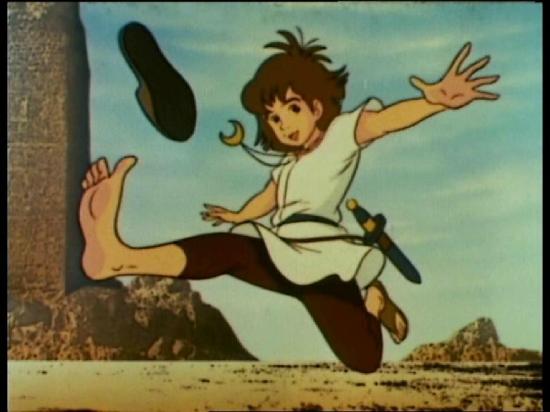
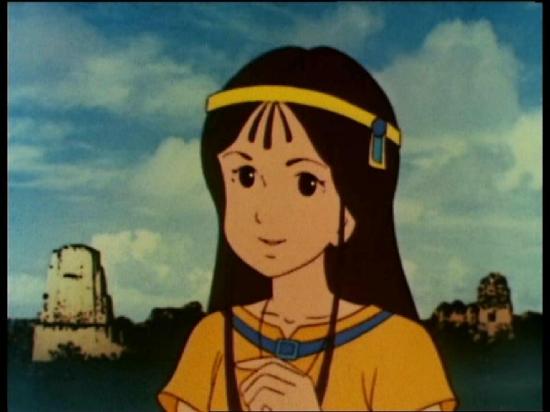
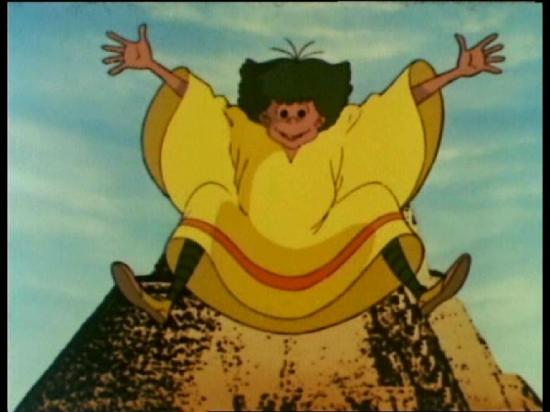
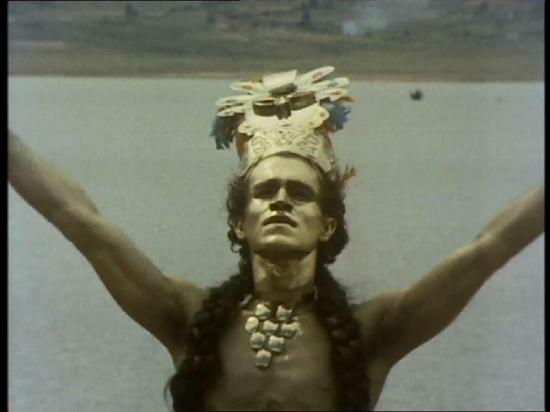
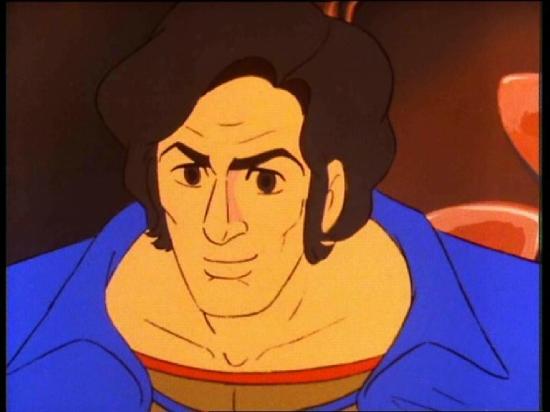
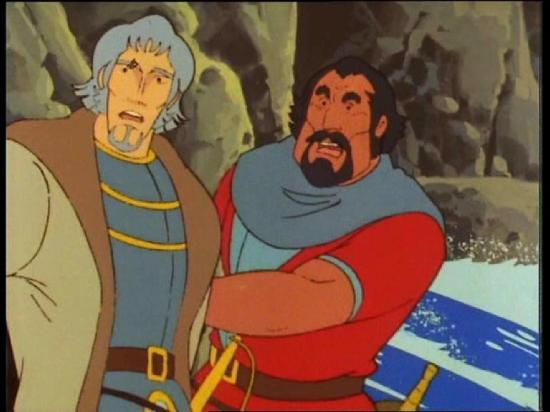
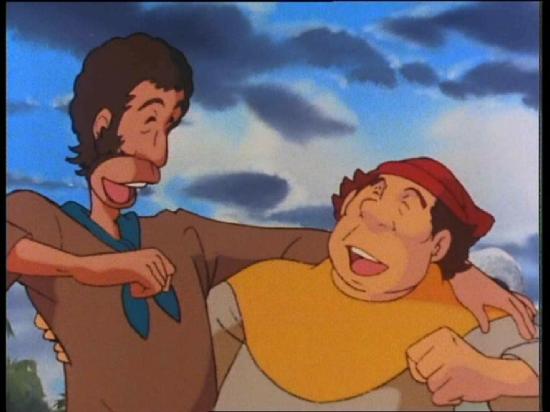

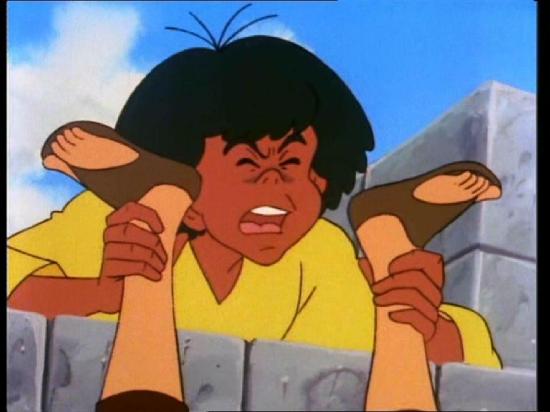
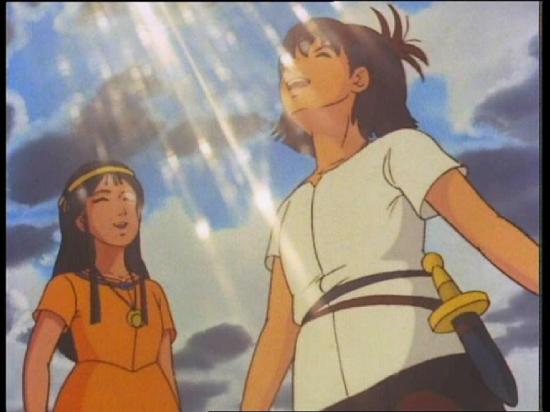
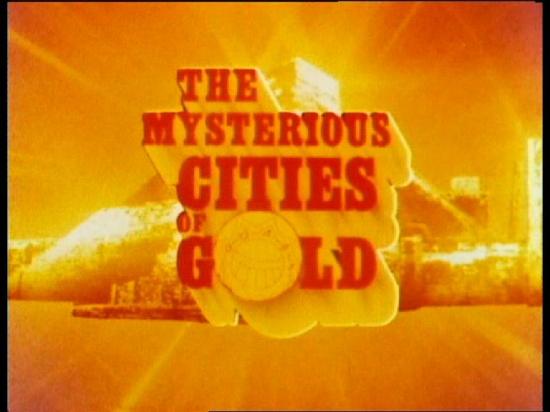
Your Opinions and Comments
Be the first to post a comment!